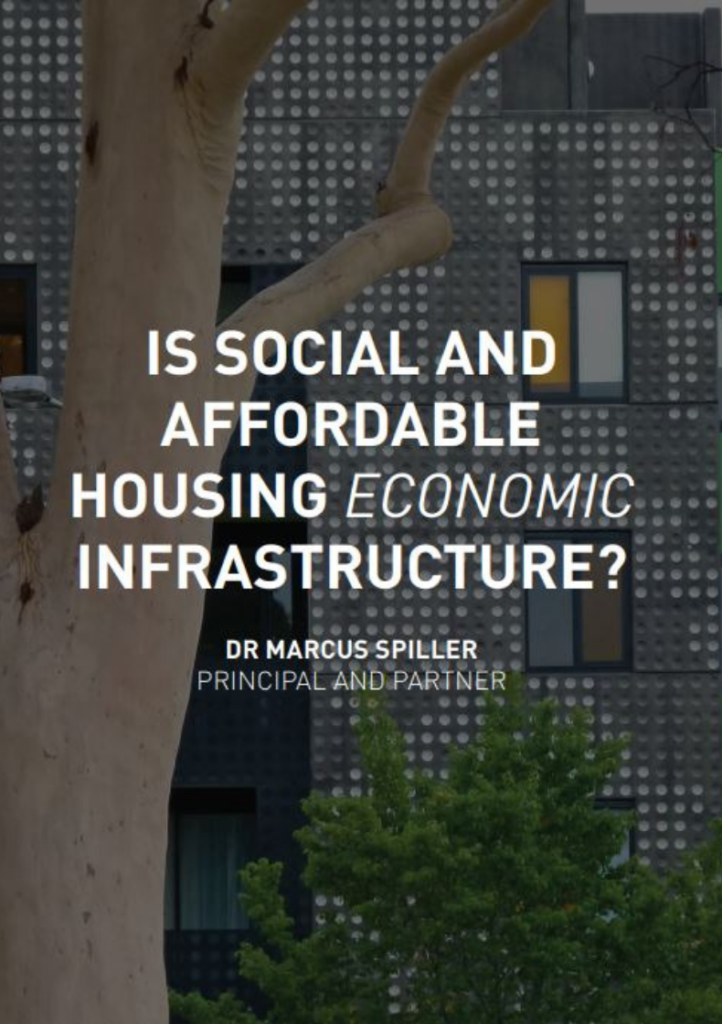Subscribe to keep up to date with the latest research, resources, news and events from The Deck.
You can also sign up to Q Shelter’s monthly newsletter, Home Matters.

Marcus Spiller
Should social and affordable housing be treated as economic infrastructure?
This is more than a rhetorical question. Construing social and affordable housing (that is, secure rental housing available at around 30% of gross income for households in the bottom 40% of the income distribution) as economic infrastructure situates this issue in the realm of growing the national income pie. Meanwhile, if we see providing social and affordable housing as a welfare program its implied validation rests on redistribution – sharing the pie.
For about 5 decades after World War 2, providing social and affordable housing was seen by successive governments as economic infrastructure first. Massive public housing estates were built under the Commonwealth State Housing Agreement (CSHA) to secure a nearby supply of workers for the budding suburban car industry, the inner city manufacturing belts and busy commodity exporting ports.
In the early 1980s, social housing commencements were between 14,000 and 16,000 per year, accounting for 10% to 15% of all starts. Through the remainder of that decade, social housing policy morphed from an economic infrastructure to a welfare discourse. New public housing starts dwindled to a trickle, interrupted only by a brief spurt of investment in 2009 and 2010 as the Commonwealth sought to mitigate the backwash from the Global Financial Crisis.
Current Commonwealth funding levels can barely sustain annual social housing starts of 2,600, particularly given the heavy cost of maintenance and replacement in the historic stock of social housing. Today, social housing represents less than 5% of all dwellings and this rate is shrinking relentlessly. Foundation ideas in micro-economics support the case for treating social and affordable housing as economic infrastructure.